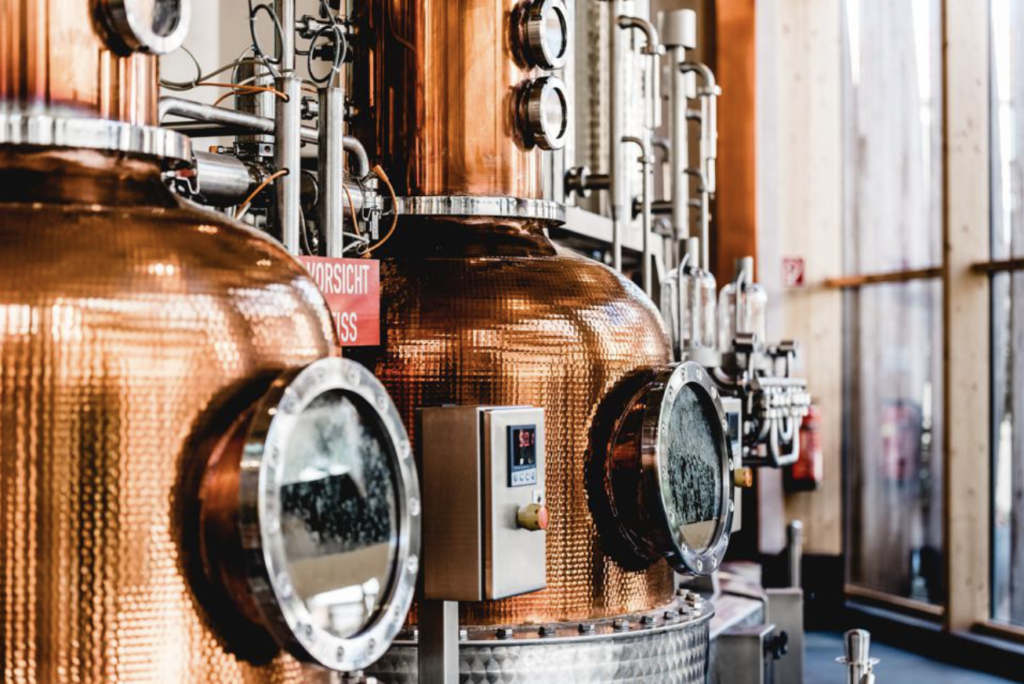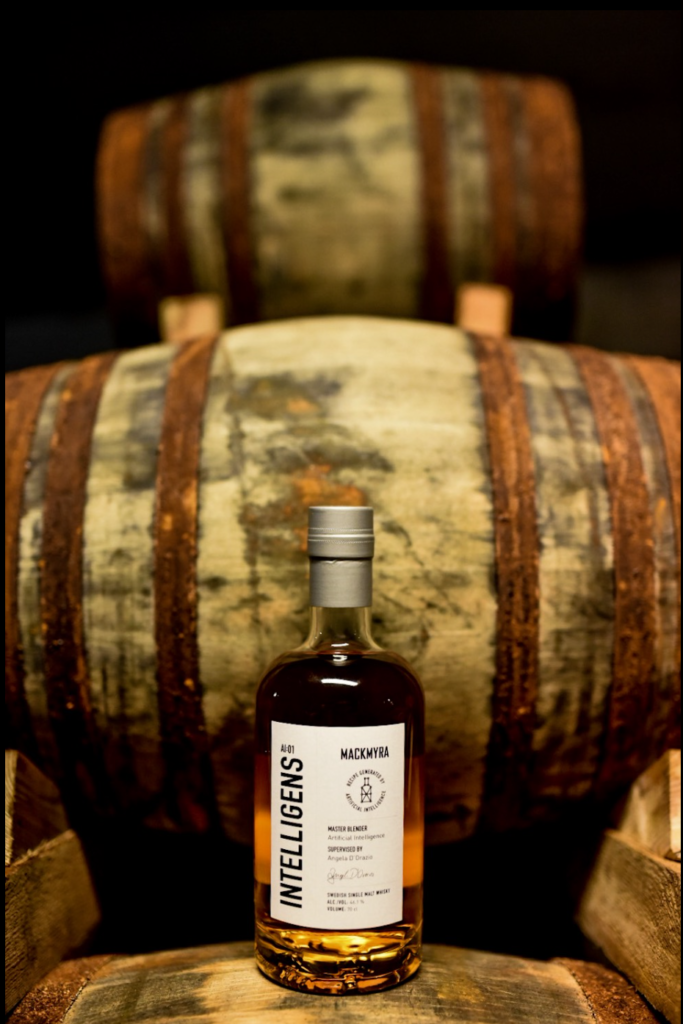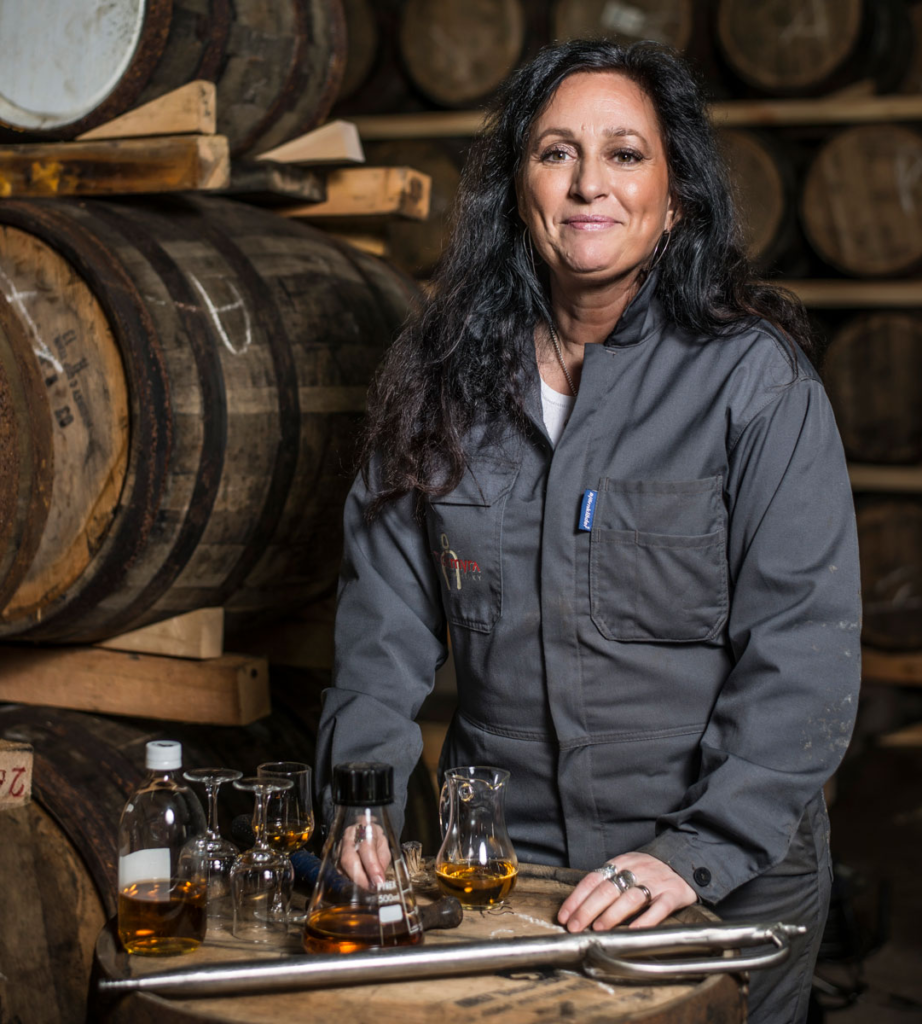Previously on Weekly Blogs, we discussed AI and its ability to transform the culinary space. This week, we will examine how AI can help develop new flavor profiles in whiskey and other spirits. All whiskey is made similarly at its base – it is simply a mixture of grain water and yeast. This is then fermented in the mix and distilled. Whiskey derives its flavor from the grain and the wood it has aged in for a certain number of years. What if I told you that in a few years, that glass of whiskey you sip at the end of a long week might have been created with the help of AI? Mackmyra, an award-winning Swedish distillery, launched Intelligens, the world’s first whiskey produced using an artificial intelligence program. Mackmyra partnered with a Finnish technology company called Fourkind to develop an AI system that augments and automates some of the tasks of the distillery’s master blender, which is responsible for whiskey flavor and product development.
With the help of Microsoft’s Azure cloud platform and AI cognitive series created by Fourkind, Mackmyra created machine learning models fed with the distillery’s existing recipes, including those blends that have won various awards in the space. In addition to recipes, Mackmyra has also included sales data and customer preferences. With this information available in the dataset, the model created over 70 million recipes that it predicts will be popular, according to its given report. The result of the machine learning model came to fruition as Intelligens, a single-malt Swedish whiskey. Of the 70 million recipes the model created, master blender Angela D’Orazio settled on Recipe #36 to be pushed to production and turned into what would be Intelligens. Below is a video by Microsoft briefly explaining the team-up with Mackmyra.
The story behind the world’s first AI-created whisky(opens in a new tab)
While AI created the whiskey recipe, the company still benefitted from a person’s expertise and knowledge. After the first few recipes were created, D’Orazio used her whiskey knowledge to determine which ingredients typically paired well together while adjusting the recipes that would not be favorable had they been made to drink. After a few sessions of this back-and-forth dialog between humans and machines, the model began to refine itself, and the recipe combinations became more refined and exciting. The machine learning model and Intelligence seem to hit the mark as it was met with some high praise from reviews all over the internet. One reviewer has gone as far as saying, “The algorithm worked!” as he was pleasantly surprised with the product.
Although Mackmyra in Sweden spearheaded AI applications in the Whiskey industry, we have some contenders here in the US that are ready to see how far they can push the needle in the industry. For example, Beam Suntory, a Ketucky-based distillery, created its algorithm called Beam Complete. This system predicts how flavors will mix and what adjustments will be made before a batch of products leaves for bottling.

The utilization of AI in whiskey works for several reasons. The main reason is deductive reasoning. Enjoying whiskey comes with a degree of an acquired taste. Master blenders try to derive flavors outside the grain to change how the whiskey presents itself to the drinker. An active whiskey drinker analyzes the experience of the product. Is there anything in the product that brings an enjoyable flavor to the drinker? Maybe the barrel? Is it the grain? Is it a combination of both? Machine learning models can help with feature detection to find what will predict an outcome. These models can understand what makes an award-winning blend and use that information to create combinations yet to be considered.
What do you think about distilleries using AI to create new blends in whiskey? I believe a market for this spirit caters to a specific kind of consumer. The kind of consumer is willing to think outside the box, similar to the master blenders and machine learning model developers. However, most distilleries with deep history have been creating the same blends for a while and do not take kindly to changes or suggestions. Because of this, consumers share the same sentiment when it comes to enjoying the product. I would enjoy trying a blend like this. It becomes an interactive tasting experience, reading the label and tasting the notes the distillery attempts to convey.
Sources
https://molzana.com/blog/artificial-intelligence-meets-the-whiskey-industry/

